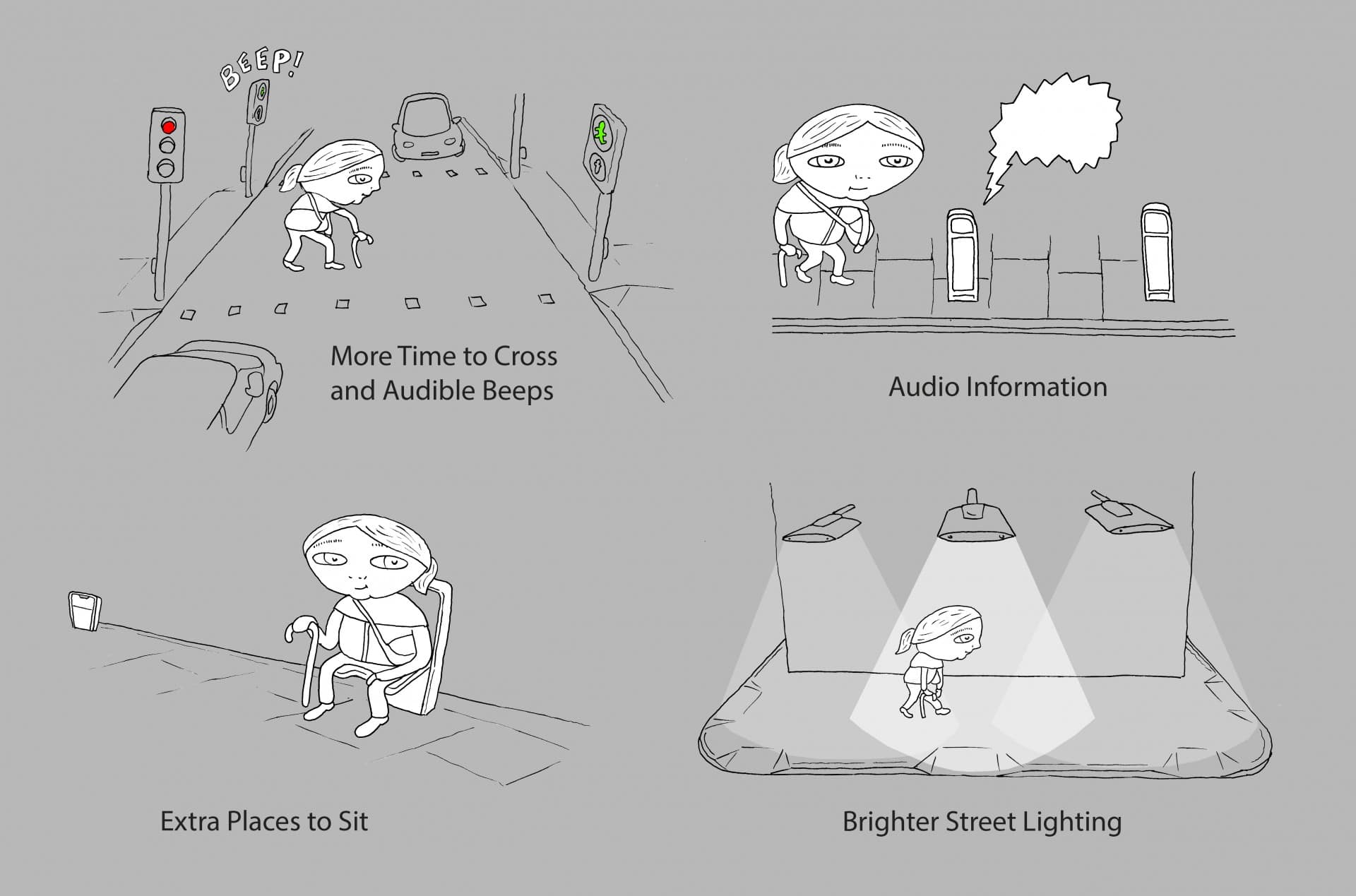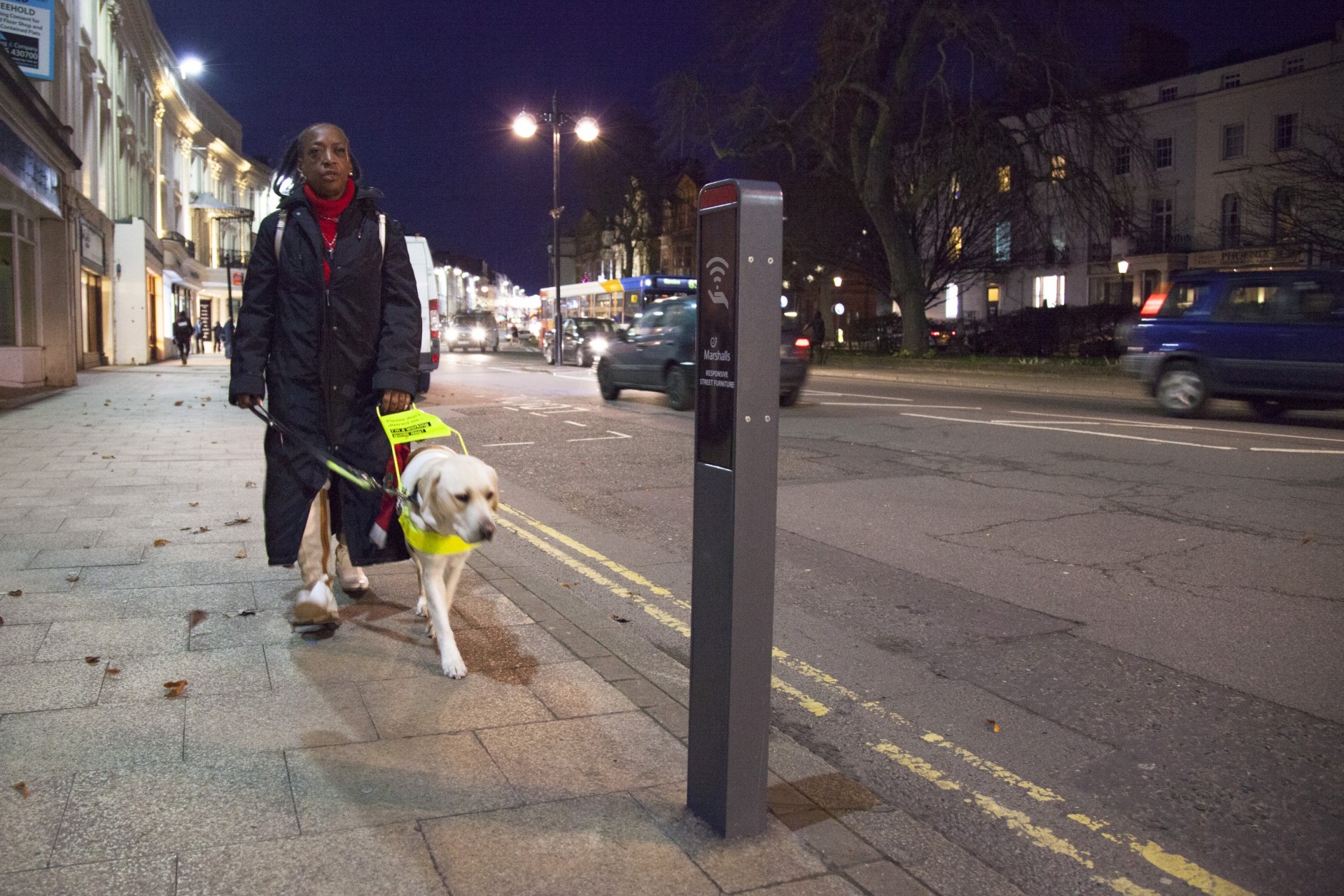United Kingdom (London)
It bothered designer and engineer Ross Atkin that while handheld devices, such as smartphones, tablets and PDAs, now give us highly customised digital experiences, the same cannot be said for the public spaces we share: “Much of the design of our streets is defined by a tradeoff between the needs of different people,” he says. “Features that may advantage one group (like more places to sit) might disadvantage another (by reducing the width of the pavement for example).”
In partnership with landscaping manufacturer Marshalls, Atkin’s Responsive Street Furniture seeks to counter that. The furniture uses digital technology to change the streets to the needs of their users. Someone who is less able to walk could automatically send a signal with their smartphone to a traffic light, and be given more time to cross the street. People with impaired vision can get brighter street lights. Key fobs could give access to audio information for tourists or the visually impaired.
With Responsive Street Furniture, Atkin hopes to bring the principles of the iPad and the Internet of Things to the streets – moving from a cookie-cutter approach to a fully customised experience. Working prototypes of the system were used at the Design Museum in London as part of their Designs of the Year 2015 exhibition.
Bio
Marcus Webb is editor of Delayed Gratification, the Slow Journalism magazine which looks back to give the final analysis on stories after the dust has settled, priding itself on being 'Last to Breaking News'.
Project leader
Ross Atkin
Support the Atlas
We want the Atlas of the Future media platform and our event to be available to everybody, everywhere for free – always. Fancy helping us spread stories of hope and optimism to create a better tomorrow? For those able, we'd be grateful for any donation.
- Please support the Atlas here
- Thank you!





